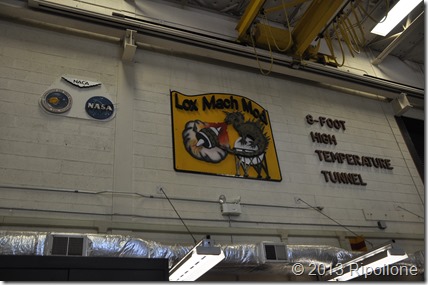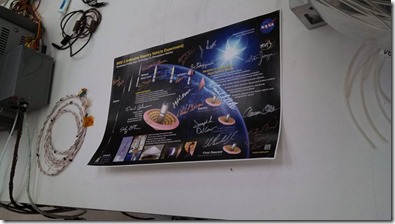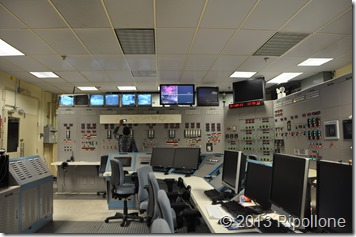Day Two: Wind, Lasers and all sorts of “stuff”
On the second day of our experience we were treated to a variety of projects. Our day started out with an introduction to IRVE. The project has progressed in stages. Currently they are working on IRVE-4. IRVE-3 was launched in 2012 and a success. The whole experiment was based on an inflatable heat shield. This would be a great introduction into the thermal dynamics and fluids. “NASA Engineering Design Challenges Thermal Protection Systems” could be an educational tool to use with this project. A great PBL, using the NASA engineering design packet and having students build different thermal shields. We were introduced to the head technicians and mechanics who are working on this project. Great insight into a collaborative effort.
After our tour of IRVE we were taken on a tour of one of the wind tunnels. This tunnel was used in testing various materials under extreme wind conditions. The tunnel is called the “8ft High Temperature Tunnel”. An amazing site the tunnel was getting ready to test materials for thermal shields. Walter Bruce, guided us through the process and how it worked. Check out the photos at Flickr.
This was a treat and a great experience. The amount of work it took for one test to be completed was amazing. Walter worked on different types of materials that could be used in heat shielding. Using these materials he was trying to develop a material that could be included in a larger inflatable landing unit. To test the material they used the 8ft Temperature Tunnel.
The day ended with this tour and was very informative. I came away exploding with ideas how we could incorporate what we learned into class. One of the main ideas was the thermal challenge and using it as a PBL. For earth science this could be incorporated into the any part of curriculum, especially the astronomy part. This would be a great teaching tool for physics or physical science. I’m sure that the different fibers used for the thermal material could be used in chemistry class. Definitely different ideas.
Day Two ended on a great note…day three would be just as interesting.
By the way Langley is the oldest NASA Center, it’s where one of the Wright brothers started NACA later changed to NASA. Cool little fact we learned on our tour.
Posted on June 30, 2013, in Class Ideas, NASA, NASA explorers school, Project, STEM and tagged NASA explorer schools Teacher Workshop Laser Research Cardinal Gibbons High School. Bookmark the permalink. Leave a comment.





Leave a comment
Comments 0